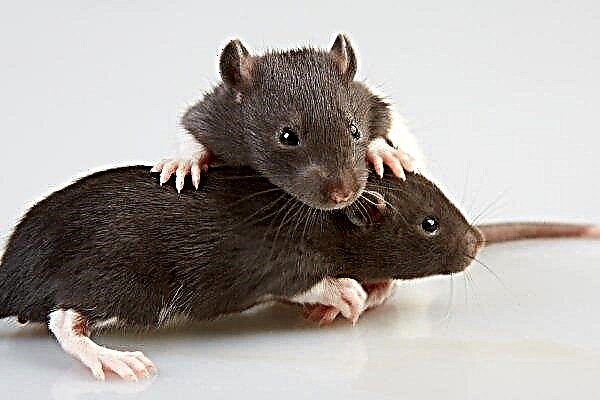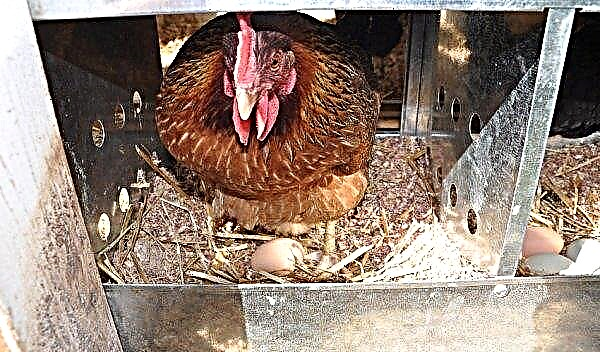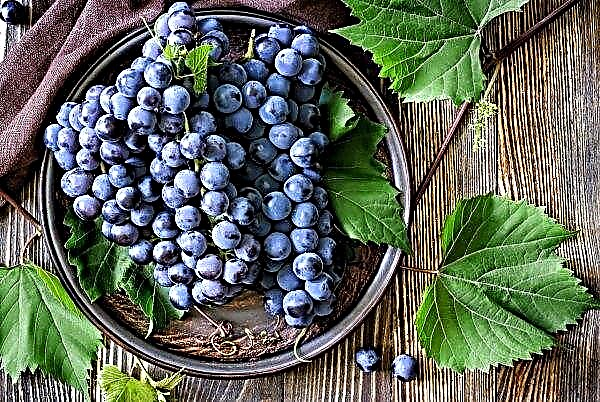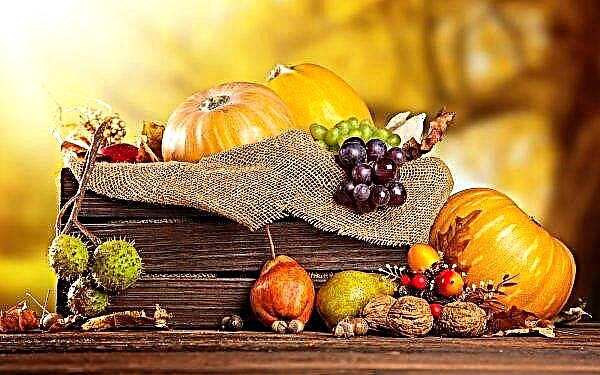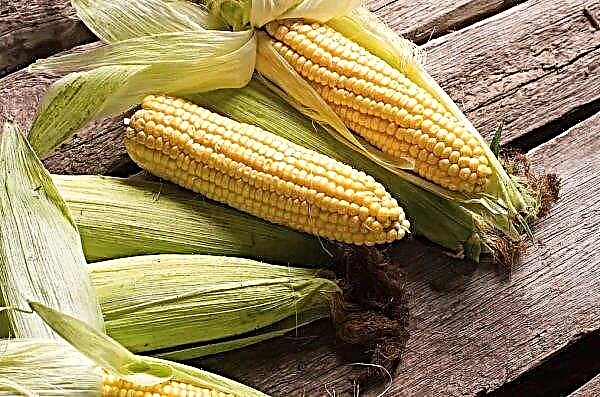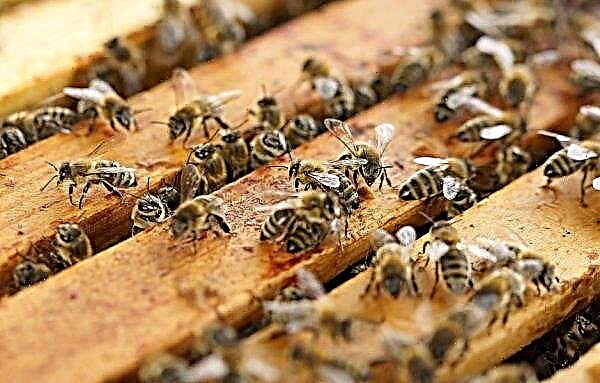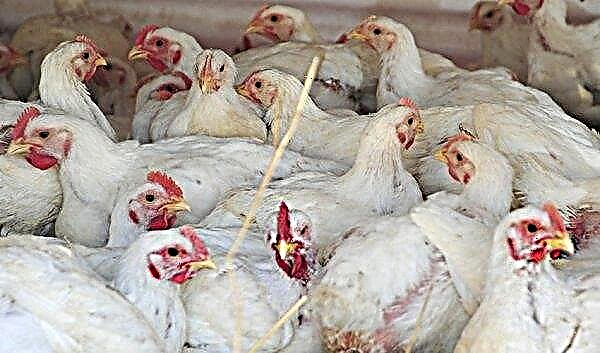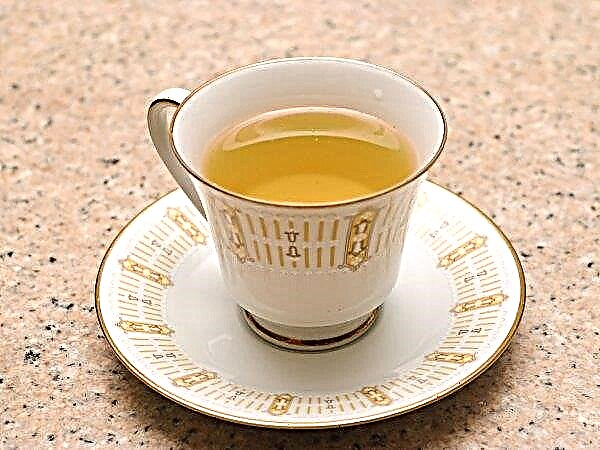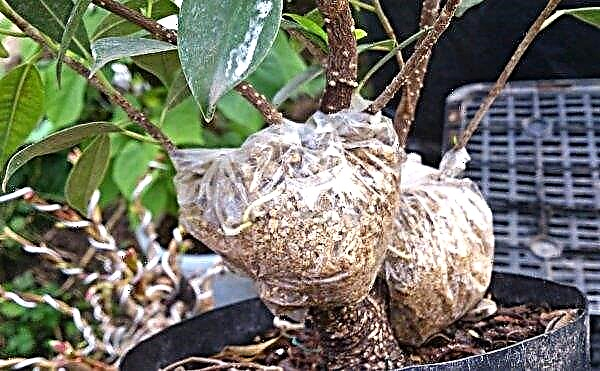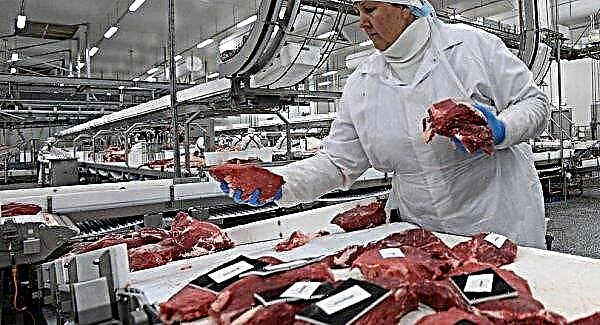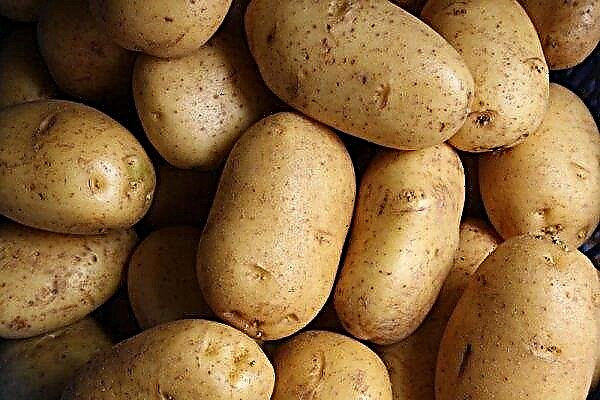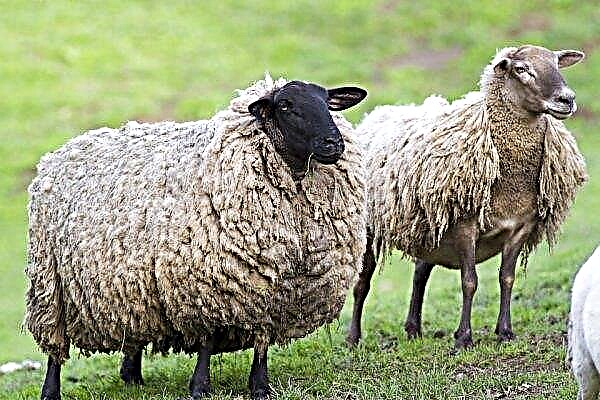Tinker, or gypsy breed of horses, is considered one of the most popular in the world. Its representatives are distinguished by extreme endurance, strong immunity and a very beautiful appearance. What are the other advantages of the horses described and how to properly maintain them - let's figure it out.
History reference
Gypsy horses (Irish harnesses, tinkers or kobes) are the result of decades of crossings and mutations of many breeds. The birthplace of these animals is considered to be Ireland, on the territory of which local horse breeds began to be crossed with varieties brought by nomadic tribes - Roma or Gypsies.
Did you know? The official name of the breed sounds like “Irish harness”, but in states such as Germany and Holland, its representatives are called tinkers, which means “gypsies”. It should be noted that the name "tinker" offends the people of Ireland who prefer to call horses cob, which means "stocky, strong, short horse."
Today it is difficult to pinpoint the genetic basis of tinkers. It is generally accepted that the blood of representatives of the Irish, Scottish and English breeds flows in their veins. For a long time, due to the large genetic “mixture”, horses were not officially recognized.
They began to engage in full-fledged breeding of these draft horses relatively recently, in 1996, when a foal named Kushti Bok was officially registered. However, this breed was formed at the beginning of the last century.

It is worth noting that the main characteristics of the gypsy breed were influenced by many external aspects, in particular:
- the nomadic lifestyle of gypsies and their need for draft horses;
- poverty of the Roma, due to which horses rarely received normal food and, as a result, adapted to environmental conditions.
Thanks to this, the horses of the described breed received good health, strong immunity, endurance and a powerful constitution.
General characteristics
Gypsy horses have an extremely memorable appearance and constitution, thanks to which they are easy to distinguish from representatives of other breeds.
Appearance and physique
Since ponies are considered one of the ancestors of tinkers, modern gypsy horses cannot boast of high stature. On average, their height at the withers varies from 135 to 160 cm. Animals with a height of 155 cm are usually called “grandees”, from 142 to 155 cm - “classic”, and below 142 cm - “mini”.
Important! A mandatory requirement for the breed standard is not to go beyond the growth indicators from 135 to 160 cm.
As for the mass of horses, it can range from 240 to 700 kg. Such a big difference between the values is explained, again, by the versatility of the genetic basis and is the norm. Koby have an extremely amazing exterior. They are distinguished by a strong, well-developed powerful body, on which a strong muscle corset is clearly visible, have a strong, but not long back, smoothly flowing into a rather high croup.
These animals have a small withers, a graceful, but at the same time powerful, thick neck, a slightly rough, massive head and long ears. A distinctive feature of the representatives of the described breed is the presence of a neat little beard located under the lower jaw.
Representatives of the breed have a truly luxurious hair, smooth, shiny mane and the same tail. Their massive large limbs are covered with excellent hairline. The color of cobbs is dominated by pinto - a light or, conversely, dark body covered with spots of the opposite color. However, you can often find horses of other colors.
Manners and habits
Despite its powerful, strong and slightly rough exterior, the gypsy breed horses have a calm, peaceful, even slightly phlegmatic disposition, which makes it possible to use them for horseback riding training. They are quiet, friendly, quickly get used to people, respond positively to young children.
Due to this nature, animals are easy to manage and train. Tinker mares are often used as nursing mothers for horse foals, since purebred mares, because of their violent disposition, often refuse to feed their own cubs.
See also the characteristics of other breeds of horses:
Using
In general, Irish kobes are characterized as hardy, calm, loving and undemanding horses that are great for harnessing and riding. Tinkers are famous for their soft neat "gait" and excellent jumping ability.
Irish horses are universal, they are widely used for:
- horse riding;
- application in a team;
- farm growing;
- rehabilitation of people suffering from various ailments.
The described breed of horses will be an excellent option both for professional horse breeders, and for those who are just starting their acquaintance with these amazing and kind animals.

Advantages and disadvantages
- Gypsy draft horses have several advantages, among which experienced horse breeders note:
- stamina, strong constitution, massiveness;
- calm, balanced, peaceful disposition;
- beautiful, aesthetically attractive appearance;
- unpretentiousness in nutrition and care;
- ease and simplicity in training and training;
- universal working properties, the possibility of use under the saddle and in the harness;
- soft, noble gait.
- However, the breed is also not without some drawbacks:
- high cost of breeding horses;
- low speed qualities of horses;
- phlegmatic character.
Maintenance and care
Despite the undemanding maintenance, in order to maintain good health and well-being of this breed of horses, they need to organize comfortable conditions.
Did you know? At competitions, in particular at horse races, cobs are used to pacify ardor and calm the tribal Arabian horses.
Stable
First of all, the horses of the described breed must be kept clean and dry. The stable should be as spacious, clean as possible, with a good ventilation system and without drafts, which can provoke the development of various ailments. Humidity in the room should be at least 80%.

Animals negatively relate to too high temperature indicators, so there is no need to install additional heating sources in the stable. The optimum temperature is considered to be + 15 ... + 18 ° С. As for lighting, horses do not like very bright lights. When installing lighting fixtures, one should be guided by the norms: the ratio of windows to the area of the room should be 1:15.
The stable must be equipped with a manger, feeders and drinking bowls, for which use products made from natural materials that are as safe as possible for the health of animals. Rectangular, rather deep troughs that are located close to lighting devices at a height of at least 50 cm from the floor are suitable as dishes for food.
Experts advise the use of automatic drinking bowls, which can save the stable staff from unnecessary work. If it is supposed to water horses from a bucket, then you need to ensure that it is securely fixed and does not turn over. Indoors, you must organize separate stalls for each horse.
The standard stall size for one individual is considered 3 × 3 m, however, if the area allows it, it is advisable to increase it to 4 × 4 m. Traditional bedding material with tinker content is straw, which uniformly covers the floor in the stable. The use of sawdust or hay is allowed. It is important to monitor the cleanliness of the litter and regularly carry out their partial replacement.
Care
To grow a strong, healthy and strong horse is impossible in unsanitary conditions. That is why cleaning stables, drinking bowls and feeders must be given maximum attention.

For cleaning you need:
- take the horse out of the room;
- completely empty the feeders from the feed and the drinkers from the water, thoroughly wash the equipment, fill in fresh food, and renew the water;
- remove the wet bedding material with a fork and take it out with a trolley;
- On the floor, after it has completely dried, evenly fill the hay, sawdust or straw.
Important! Once a month, disinfection of the stables, all equipment and tools, toys of the horse should be carried out.
Particular attention should be paid to horse care:
- Mane and tail. A regular inspection is required by the mane, tail and friezes - they are recommended to be systematically combed, untangled, washed thoroughly using specially designed zooshampoos. Immediately before the walk, the braid is braided to the animal, and in the evening - loose.
- Wool. Tinkers have a beautiful shiny woolen coat that needs to be combed regularly - first with a stiff, then soft brush in the directions from head to back, alternately from one side to another.
- Hooves, teeth and nostrils. After each walk, it is necessary to carefully examine the hooves, clean them with a special hook, then wash and dry them. Also, you need to wipe the nostrils of the animal with a damp cloth every evening and check the oral cavity for the presence / absence of inflammatory processes.
In order to keep horses healthy for as long as possible, they need to provide regular exercise in the form of training, long walks.

Proper feeding
The nutrition of gypsy horses will be largely determined by their activity, as well as the time of year.
In the warm period, green foods and fresh vegetables should predominate in the diet of animals:
- gramma;
- carrot;
- potatoes;
- beet.
In the cold season, horses are fed with hay, grain mixtures - oats, corn, combined feeds, fed with vegetables. Be sure to include in the winter menu vitamin and mineral complexes based on vitamins B, D, C and calcium. Every day, you should treat the tinkers with a small, 30 g, portion of the salt, which allows you to restore the water-alkaline balance of the body.
Did you know? Cobes today are considered one of the most expensive breeds. On average, the cost of a pedigree stallion starts at 10 thousand dollars.
During high activity, training or walking horses sweat a lot and, as a result, lose a lot of moisture. To prevent dehydration, it is necessary to provide Irish horses with free access to water.
Tinkers are amazingly beautiful, kind and calm horses, which today are extremely popular all over the world. They are distinguished by an unusual exterior, endurance, strong, massive physique, and at the same time they are absolutely undemanding in nutrition and care, they are ideal amblers for riding.

